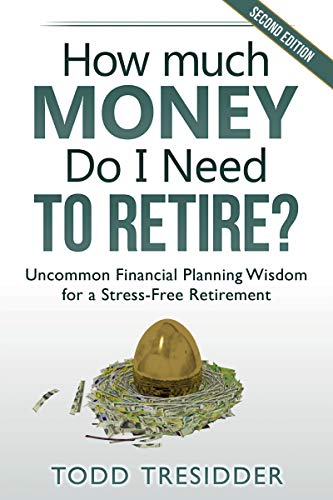Finance
Book Review: How Much Money Do I Need To Retire? By Todd Tresidder


How Much Money Do I Need to Retire? explains the fundamentally flawed logic that most people base their retirement assumptions on. After taking a deep dive into the dangerous assumptions that the traditional retirement planning model suggests, Tresidder explores alternative solutions.
Throughout the book, Tresidder encourages you to play with your own numbers to build out the amount of money you may need to retire. With access to helpful worksheets, you can take a hands-on approach to learn about retirement planning from a man that was able to retire at 35.
What’s How Much Money Do I Need To Retire? All About?
The goal of the book is to help you understand the logic behind retirement planning. You’ll explore different strategies for retirement planning and learn how to pull the best of each model into your plans.
The book is divided into discussions of three models that can be used to plan for your spending needs in retirement. The first model is the traditional retirement planning model. The bulk of the book is spent dissecting the conventional wisdom that makes flawed assumptions to determine your retirement number. The second model is centered around creative lifestyle planning that could reduce your savings requirement. The final model explores cash flow planning as a solution for retirement income that you can never outlive.
Chapter Summary
Throughout How Much Money Do I Need to Retire?, Tresidder takes a logical approach to retirement planning. He presents the three planning models in an easy to understand way that will allow you to apply the knowledge to your own planning. Let’s take a closer look at what’s covered in the book.
Introduction
Tressider opens up How Much Money Do I Need to Retire? by outlining the problem. Essentially, most retirement planning experts use a traditional retirement model that has many flaws. He shares a handful of statistics that reveal the stark reality that traditional retirement planning is failing in America.
The hard truth is that the traditional retirement planning calculators ask for you to make assumptions that you cannot possibly predict accurately. Even a small misstep in the calculations from the correct assumption could lead to a retiree either saving too much for retirement or running out of money.
He also shares where you can gain access to the printable worksheets that go along with this book. If you take the time to print them out, they can be very helpful. As you read through the book, you can start to plan out your retirement nest egg needs with a fill-in-the-blank sheet.
Model 1: Conventional Retirement Planning, The Smart Way
Tressider spends the majority of the book explaining the ins and outs of the traditional retirement planning model. He breaks down the assumptions and pulls out the useful parts.
The goal is to help you understand the flaws of a traditional approach to retirement planning and which components are still useful to consider.
What It Costs To Live A Great Life In Retirement
This chapter kicks off the book by explaining that an inaccurate retirement savings goal is better than having no goal at all. At the very least, you’ll have something to diligently work towards even if you have to make adjustments along the way.
It’s All About The Assumptions, Not The Calculator
In this section of How Much Money Do I Need to Retire?, the cracks in the traditional retirement planning model will begin to be exposed. Although traditional calculators make things seem simple on the surface, the underlying assumptions can be almost impossible to pinpoint.
Tresidder shares some of the unknowable details that many retirement planning models require, such as when will you die. Your retirement planning is only as good as the assumptions you put into the calculator. So it’s easy to see how you could run into some serious issues.
The Five Essential Questions
You’ll walk through the five important questions that you need to answer for an accurate retirement nest egg. As you walk through the questions, you’ll realize how difficult it can be to answer these accurately.
From inflation to an increase in spending due to medical issues, you cannot see into the future to answer these questions. The breakdown of each truly helps to illuminate the flaws of traditional retirement planning. You’ll start to wish for a better solution.
How To Accurately Estimate Investment Returns
At this point, you’ll learn about the variables that will affect your investment returns. The three crucial parts include:
- Volatility
- The sequence of returns
- Valuations
Although he does a great job of breaking down the questions into easy to understand terms, there’s a lot of detail that you’ll need to absorb in this part of the book. It could help to take notes on your worksheets or read the complex sections twice to fully grasp the concepts.
How To Estimate Your “Magical” Retirement Number
Tresidder recaps the important lessons that you’ve learned throughout the first section of How Much Money Do I Need to Retire? He also shares more information on the dividend discount model.
Since the goal of the book is to find your retirement number, Tresidder shares calculation options. The first is to plan on recalculating your retirement number every few years by replacing your original assumptions with actual data. With each recalculation, you’ll reduce the potential for error.
The second solution is to build a confidence interval through the variation of key assumptions in this model. With that, you’ll have a comfortable range of what is possible. He will take you through the steps of building out a confidence interval for your retirement plans.
In this section, he touches on the 4% rule. With a brief explanation of the 4% rule, Tressider shares some possible solutions but cautions against solely relying on the 4% rule. He also outlines the two most important components to a successful retirement — your savings rate in your early years and your return on investment minus inflation. Finally, he gives some advice for using retirement calculators the right way.
Model 2: Lifestyle Planning, The Creative Way
The second model of retirement planning is centered around lifestyle flexibility. Tresidder introduces a list of alternative retirement lifestyles for you to consider. Each could dramatically alter the amount of money you’ll need to save for retirement. Essentially the lifestyle changes include:
- Dramatically cutting your expenses
- Increasing your post-retirement income
- Choosing an alternative investment strategy
Any combination of these choices could have large ramifications on your future retirement. Tresidder encourages you to brainstorm some creative retirement lifestyles and determine how they could affect your savings goal.
Model 3: Cash Flow Planning, The Simple Way
In this final model, Tressider shares his secrets to a secure retirement at age 35. The basic choice was to create income streams that would grow over time to offset inflation. The income streams must not be connected so that if one stream is taken away temporarily, you’ll have other income to support your lifestyle. He outlines three simple rules to follow in order to make this model a secure approach.
Conclusion
In the conclusion of How Much Money Do I Need to Retire?, Tresidder recaps the main points from each retirement planning model. He encourages you to take advantage of the best components from each model in your own plans.
About Todd Tresidder



Todd Tresidder is the investor behind the popular site, Financial Mentor. Before creating the site, he was a hedge fund investment manager that secured his financial independence at age 35. Since then, he has enjoyed continuing to invest and write about financial markets. His message is to focus on personal development while pursuing financial freedom. Through his series of books, Financial Freedom For Smart People, he shares his knowledge in an approachable format.
Who Should Read How Much Money Do I Need To Retire?
Retirement planning is not a simple topic. Tresidder breaks down the often overwhelming assumptions of traditional models down to their fundamental parts. Although he does a great job of breaking down the assumptions to an understandable level, you’ll run into some sections of the book that are filled with investor-specific knowledge.
If you’re just starting your financial journey, you may want to start with a book that offers money-saving advice before moving on to this more complex topic. But if you already have a firm grasp of basic financial principles, then this book is a great way to boost your knowledge further. At 238 pages, you’ll likely find plenty of useful gems that you can apply to your own life no matter where you’re at in your financial journey.
Final Thoughts
Overall, How Much Money Do I Need to Retire? offers useful advice for anyone attempting to plan for their retirement. The numbers surrounding retirement planning can seem overwhelming. But Tresidder breaks the complexity down to its core parts. You’ll walk away with a solid understanding of each of the retirement planning models and be able to move forward confidently.
The post Book Review: How Much Money Do I Need To Retire? By Todd Tresidder appeared first on The College Investor.
Finance
How to Be More Creative
Those of us who weren’t fortunate enough to be born the next Picasso may think there’s no way we can learn to be more creative. But is that really true? According to some of the most creative people in the business, it’s not.
I recently interviewed Brian Koppelman, a renowned filmmaker, producer, and writer. He has worked on some of my favorite movies, like Rounders, Ocean’s Thirteen, and The Illusionist. He also created the popular T.V. show Billions, which has won many prestigious awards. Brian’s creativity has resulted in massive career success, and he’s spent years perfecting his creative process. We sat down together and he gave me his best advice on how anyone can be more creative.
Quick Tips on How to Be More Creative:
- Tip #1: Don’t be afraid to fail
- Tip #2: Don’t try to get it right on the first try
- Tip #3: Accept that creating can be uncomfortable
- Tip #4: Limit your time
- Tip #5: Reduce your anxiety
- Tip #6: Use rejection as a tool
You can watch my full interview with Brian below.
Tip #1: Don’t be afraid to fail
Brian says, “Whatever your favorite movie is, at some point during the writing of it the screenwriter felt completely lost”. When you’re working on a big creative project, you run the risk that it will be a complete failure. People often forget this, because they only see the finished successful product. But we know that for every movie that gets made, there are thousands of movies that don’t. If you’re afraid to fail, you’ll never be able to get to that amazing finished product. Even if it takes a few tries to get it right, it’s worth it to create something brilliant in the end.
Tip #2: Don’t try to get it right on the first try
There are two steps to creating something new: the first step is making the first draft, or coming up with something from scratch. The second step is editing that draft into a beautiful finished product. If you want to be more creative, you need to be careful not to combine these two steps (most people do). When you’re creating something from scratch, you need to silence your inner critic and just create with as much freedom and passion as possible. THEN once you have a first draft, you can go back over it with a critical eye and make it better.
If you try to edit it while you create, you’re limiting your creativity in a big way. You have to be able to try something new, and edit it out later if it doesn’t work. If you edit it out before you try it, you’ll never know if that would have ended up being the perfect addition.
Tip #3: Accept that the process of creating can be uncomfortable
We all have times where we’re working on something and we think it’s terrible. Brian explains that when he was working on his ESPN documentary on Jimmy Conners, he would come home feeling like he made it worse rather than better. But you have to get up the next day and attack it again. Once you realize that this discomfort is part of the process of making something great, you can learn to work through this tough part of the process and become even more creative.
Tip #4: Limit the amount of time you have
You don’t need a lot of time to make something great. It’s actually a huge advantage If you only have an hour a day to work on your creativity, because it forces you to focus and work with intensity. If you give yourself too much time, it’s too tempting for your mind to wander. By limiting your time, you’ll produce more creative work at a faster pace. Brian also advises to “Leave yourself ‘a wet edge’, or a little roadmap for tomorrow, at the end of your creative practice”. This way your subconscious will keep working on it, and when you come back the next day, you’ll be able to hit the ground running.
Tip #5: Eliminate sources of anxiety
When Brian and his partner David Levien were writing their first screenplay, they were both working full time. Brian advises aspiring creators not to quit their jobs, because it creates too much pressure. If there is a lot of pressure on you to create something magnificent, it can actually thwart your creative abilities. Instead, focus on eliminating anxiety wherever you can so you can truly focus on your creativity.
Tip #6: Use rejection as a tool
A lot of times when we hear “No”, it’s crushing, and it feels like a huge judgement on our work and our character. But Brian points out that you never know what’s going on behind closed doors, “Maybe that morning the head of the agency said ‘hey guys, don’t tell anybody but we can’t afford to take on any new clients. So for the next month you need to pass on everything’”. Your work could get passed up because of something internal you don’t know about, but if you take it personally and give up, you might miss your chance.
Rejection can actually be a useful tool to help you look objectively at your work.
Take your Creativity to the next level
Overall, creativity is a skill that you can improve over time. If you follow the tips Brian laid out above, you’ll be well on your way to being more creative.
Once you’ve honed your creative process, you may want to take it to the next level. Many great creators have started businesses from their work, and you could too.
If you want even more inspiration on how improving your creativity could transform your life, take my earnings potential quiz below.
How to Be More Creative is a post from: I Will Teach You To Be Rich.
Finance
YOUR GUIDE FOR SAVING MONEY ON PET FOOD
If you are like most people, your dog is not simply a pet. He or she is a member of your family.
You want to provide them the best of everything. From toys to treats, you love to spoil them rotten
But the costs. Oh, how they can quickly get out of control!
WHY CHEAP IS NOT BETTER
Your first thought may be to buy the cheap dog food.
Please, don’t.
The problem is that the lower quality food can lead to health problems for your pet, which could end up costing you more. It is not the answer.
Instead, focus on ways you can save while still getting your favorite canine the food and treats that are best for them.
STOCK UP WHEN ON SALE
When you find a great deal on the dog food you need, buy extra! There is no reason to pick up one bag when you can get a couple and save.
BUY IN BULK
Oftentimes, the larger bags result in greater savings. Compare the price per ounce of the smaller items to the bigger bags to find the lowest cost.
TRY THE STORE BRAND
Just as with the store brands you buy, sometimes the store brand of pet foods is the same – simply in different packaging.
Carefully review the ingredients before making the switch. After all, if they are the same, why are you paying for the label?
SIGN UP FOR THE STORE REWARDS PROGRAM
Loyalty has its perks. Many stores offer loyalty programs to members. You can get exclusive offers, discounts and coupons that are only offered to those who have signed up.
Some programs also reward for your purchase in the form of points. Once you accumulate the points you can cash them in towards savings or freebies.
GET ON THE LIST
Even if you are a member of their program, make sure you are also on the list! You will get alerts for sales and may even find some awesome coupons to make their way into your inbox as well.
Tip: Make a secondary email address to use so your inbox is not cluttered with these types of emails.
USE ONLINE SERVICES
There are online pet product providers, such as Chewy, who sell pet food and other items, often at a discount. The added perk here is that they deliver it directly to you – so no lugging home huge bags of dog food from the store.
You can use apps such as Honey or Wikibuy to compare online prices to ensure you also find the lowest possible price for the items you need.
SET UP AUTOMATED DELIVERIES
Some sites, such as Amazon, offer discounts if you sign up for automated delivery of select products. Not only will it be delivered, but you also won’t have to worry about running out.
CHECK FOR REBATE OFFERS
Sometimes, manufacturers offer product rebates. If you can find these, you’ll get money back on your purchase.
PRAISE (OR COMPLAIN)
If you have a food your pet loves, send an email letting them know. They may send you coupons or vouchers for products as a thank you.
Alternatively, if you have a problem with a product, make sure to reach out. The company may offer a refund or alternative product for your trouble.
SHOP THE WAREHOUSE
Skip the big box stores and head to your local warehouse. You may find larger bags at a lower cost sold there – saving you time and money.
BECOME A TRACKER
All stores run sales in cycles. They do this on food, clothes, and more – including pet food! Keep track of the offers at your favorite stores.
You will start to learn their cycle and can then stock up when items are on sale.
SKIP THE STORE AND MAKE HOMEMADE DOG FOOD
You can even bypass the store and make your own dog food right at home. There are countless recipes on Pinterest that you can try.
But, before you rush to start a cooking frenzy, make sure to carefully research each ingredient to make sure it is safe for your pet to consume.
PUT COUPONS TO WORK
Before you head to the store, head online, and search for coupons for your pet’s food. You may find them on the manufacturer’s website or on coupon printing sites.
Make sure to also check the product packaging as you may find them stuck to the front of that big bag of dog food.
GET FREE SAMPLES FROM YOUR VET
Vets get free samples of the products they sell – so ask for one! The freebies do not cost them anything, so they should be more than happy to give you one if you inquire.
The post YOUR GUIDE FOR SAVING MONEY ON PET FOOD appeared first on Penny Pinchin' Mom.
Finance
A Peek Into the Last Few Weeks (and our family vacation!)
How to get a shower and get ready for the day when you’re taking care of two babies! 🙂
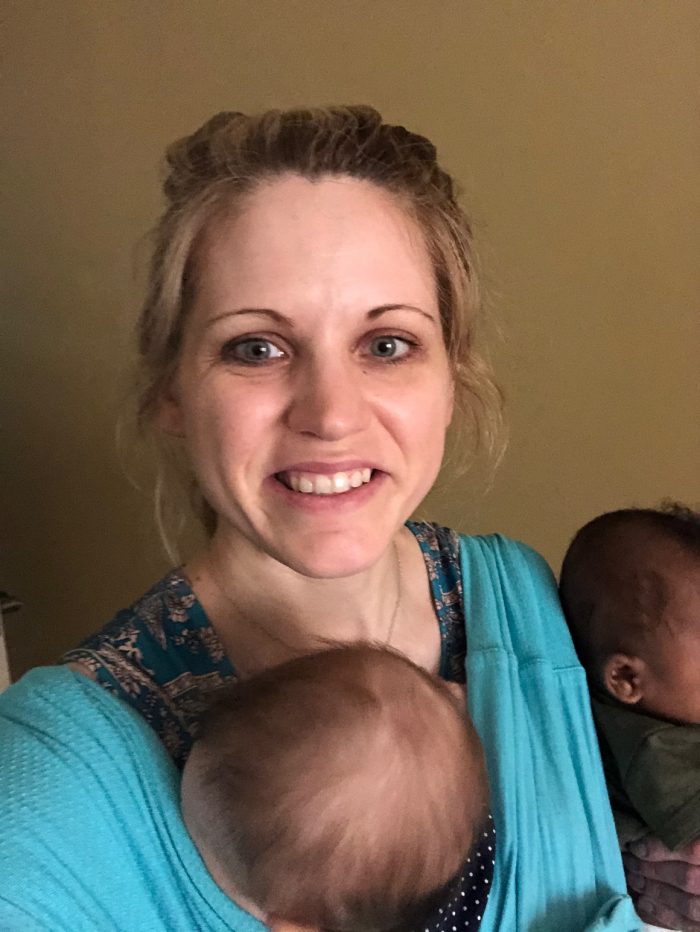
People ask me all the time how I’m doing with having two babies and I think this early morning picture says it all. Life is full, my hands are full, and my heart is so full! (By the way, I’m actually putting this post together while trying to bounce Kierstyn to sleep in the Baby K’tan… it’s rare that I don’t have at least one baby in my arms these days!)
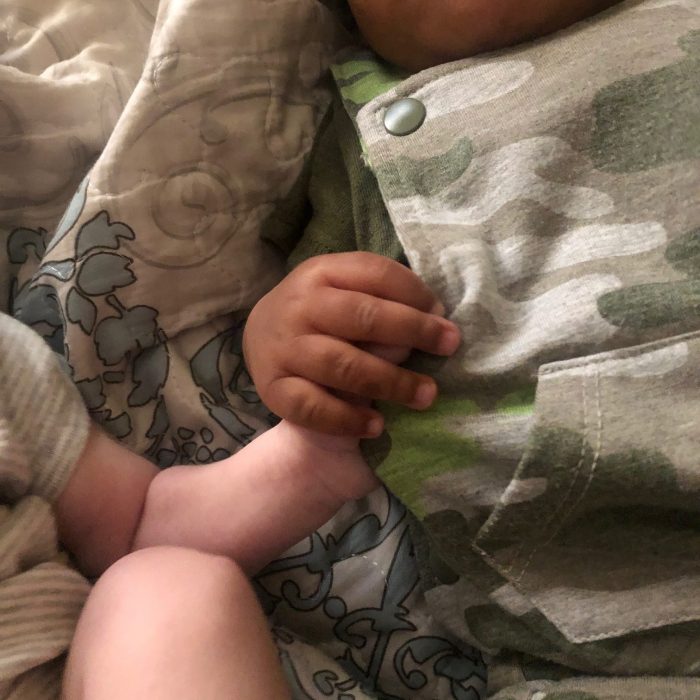
How could my heart not be full when this is an almost daily site at our house!
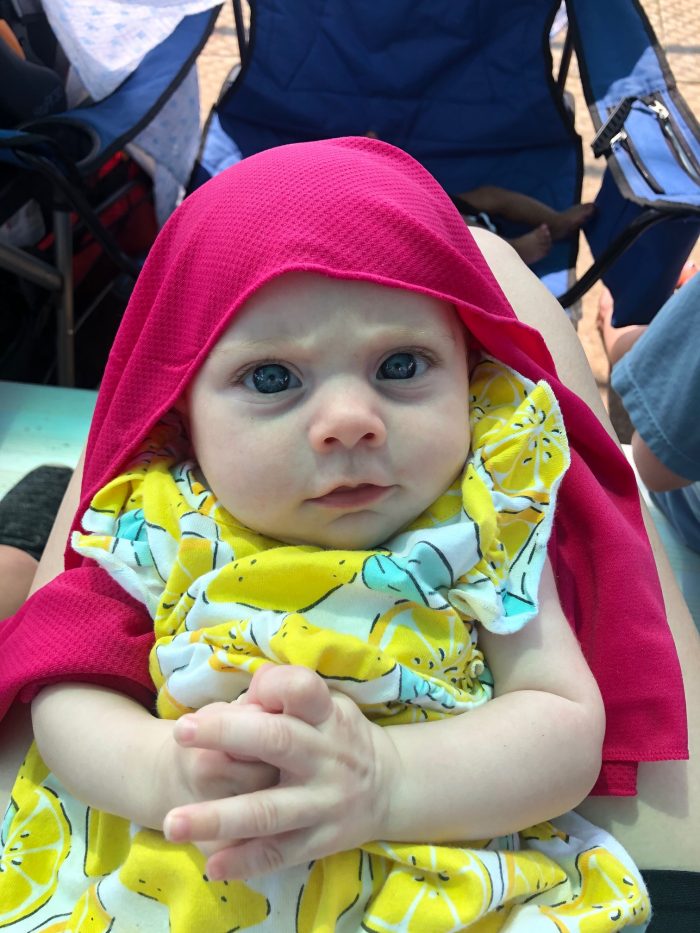
Silas had another weekend baseball tournament at a town about an hour away (Murfreesboro). We had fans set up with a generator, tents, lots of cold drinks in coolers, and these cold wraps to keep everyone cooled down

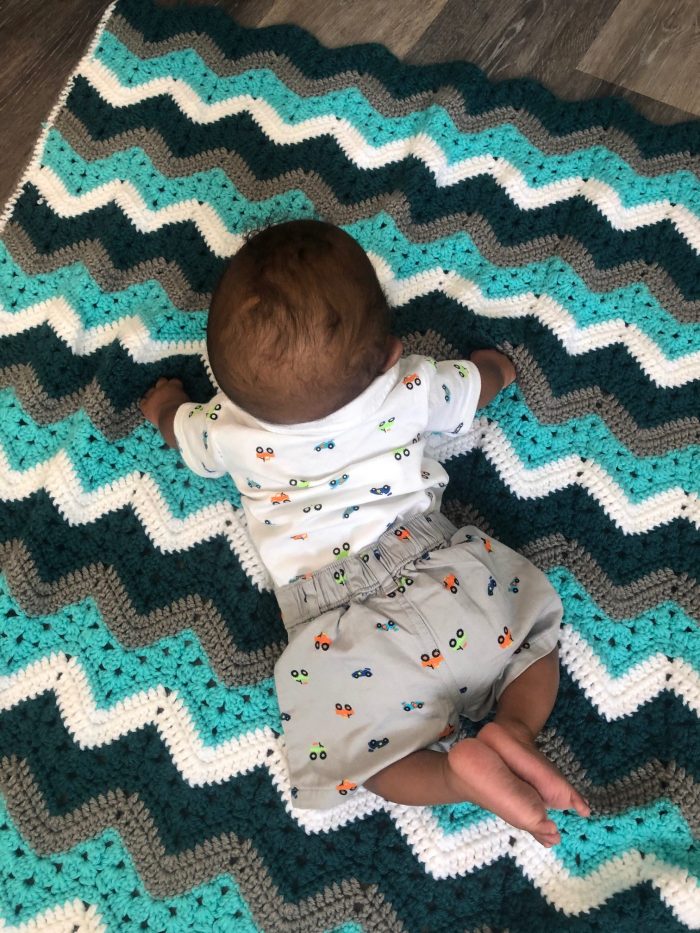
Champ has been learning how to hold his head up and roll over!
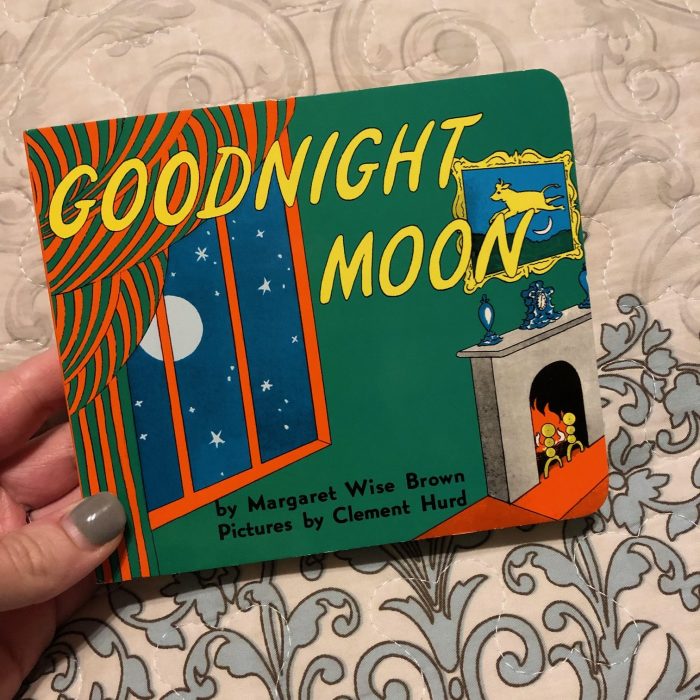
The babies have started to love having books read to them. Goodnight Moon was Silas’ favorite book when he was little, so it’s been so fun to introduce the babies to this book!
We packed for our family trip in tubs — each person got a tub for the week. This saved so much space in our vehicle and made things much more organized!
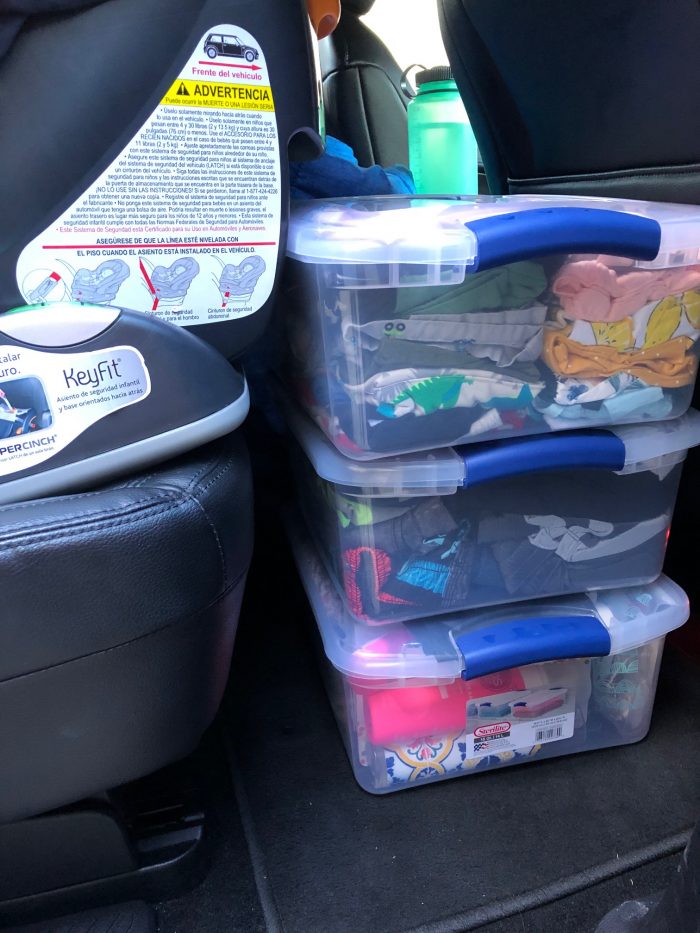
Our one out of state trip this summer was to go meet up with my family at Bull Shoals Lake in Arkansas. We weren’t sure if the trip was going to happen due to COVID-19, but because of a number of safety measures we put into place, DCS gave us special permission to be able to go and take Champ with us.
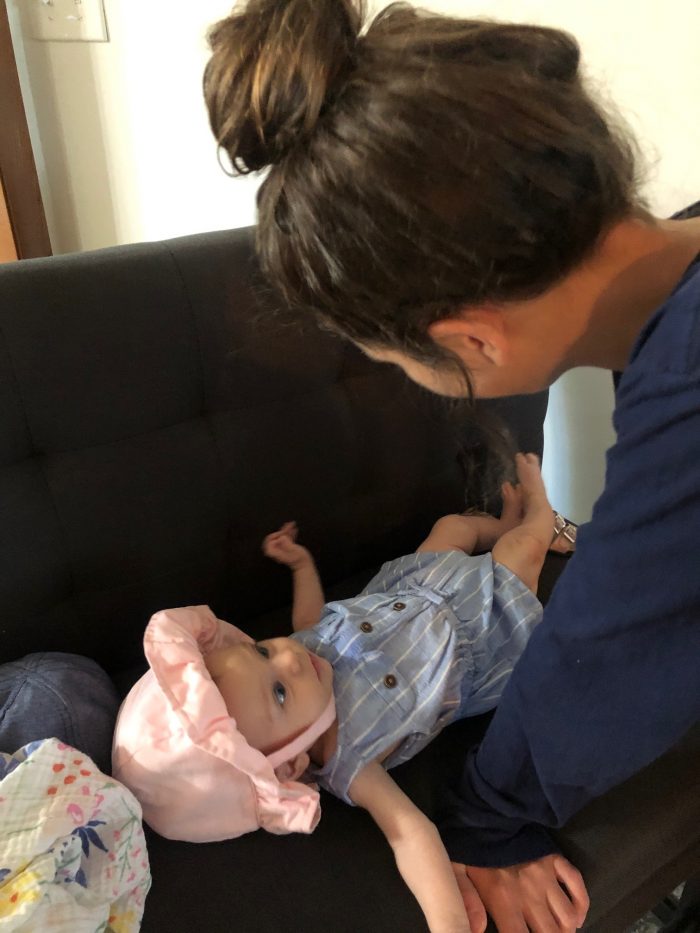
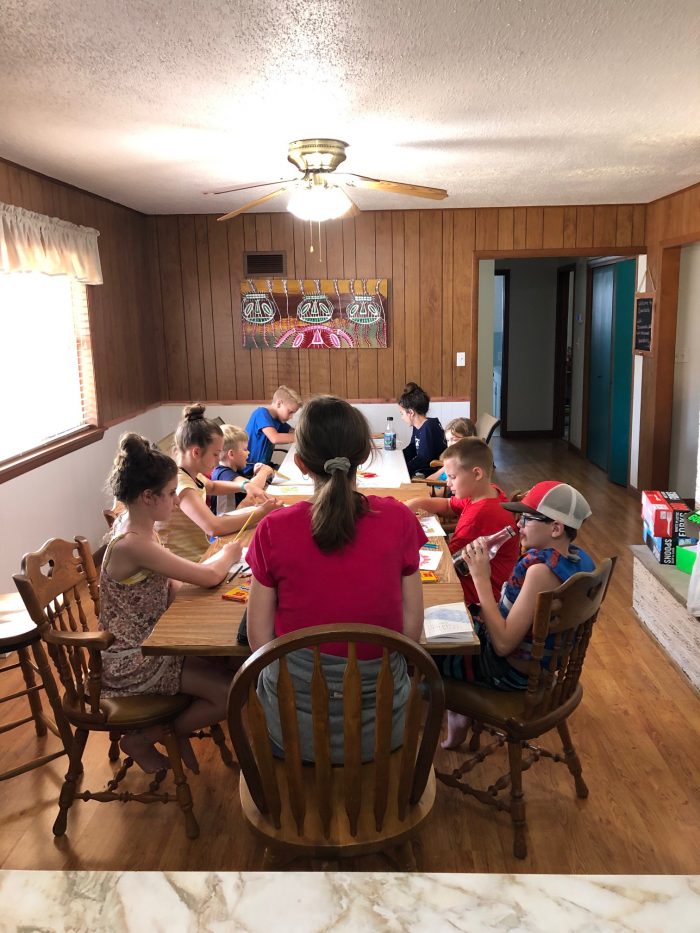
Every afternoon during our annual extended family lake vacation, my mom has “Grandma Time” with her grandkids. She teaches them a Bible lesson, they do a craft, have a snack, and do a game together.
Over the past two years, the older grand kids have started helping out. This year, each of the older ones signed up to help out with a craft and/or a snack and then Kathrynne is in charge of games (complete with an elaborate ticketing system and prizes they can turn their tickets in for at the end of the week ala Chuckie Cheese style!)
As many of you know, my mom had some serious health issues last year, including multiple extensive surgeries and skin grafts for skin cancer. She also got really sick with pneumonia in the middle of all that.
She almost didn’t get to come on the annual lake vacation last year. She did come, but she was so weak and sickly that I wondered if she’d make it another year.
This year, at 66 years old, she’s stronger than ever — not only leading Grandma Time, but also skiing and helping with the babies and cooking and looking for ways to reach out and serve all day long.
I know many of you prayed for her last year and I just wanted to tell you thank you, again! I look at this photo I snapped earlier this week and it just reminds me to be grateful for the many gifts it represents.
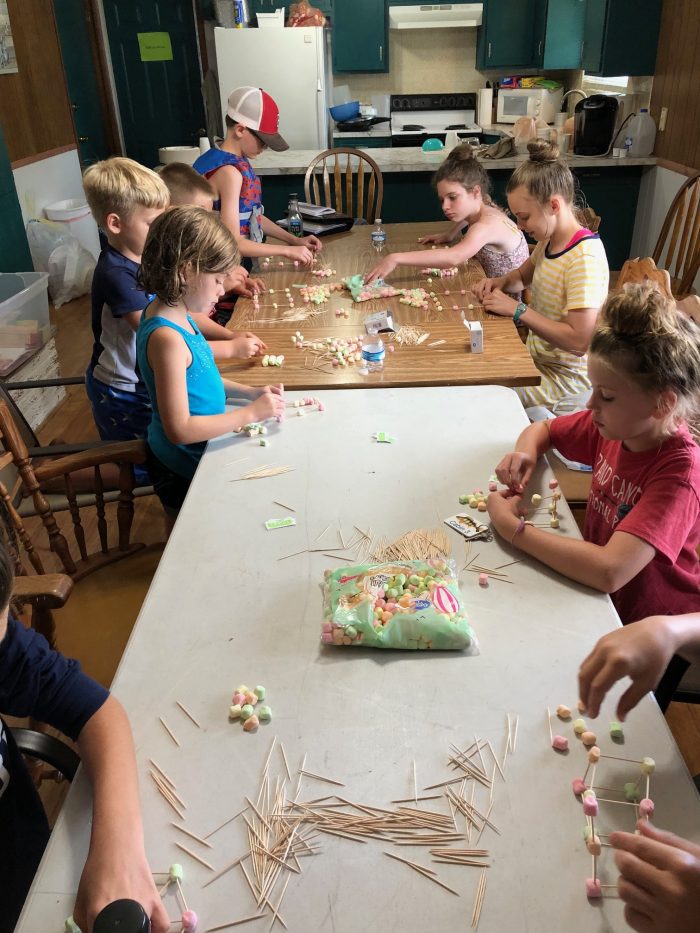

Her first time in a pool!
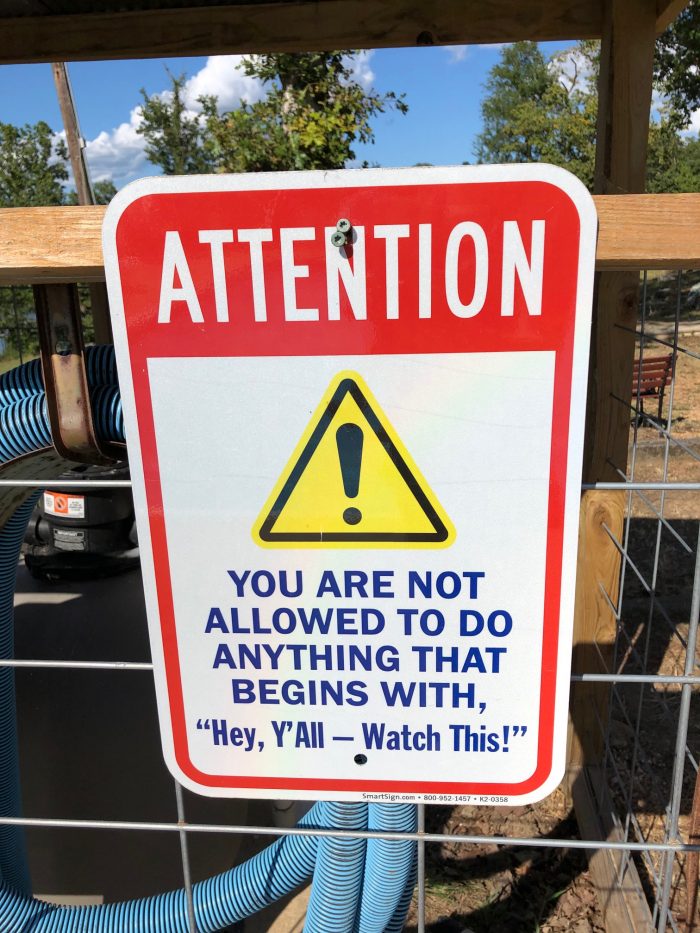
They had this sign at the pool! 😉
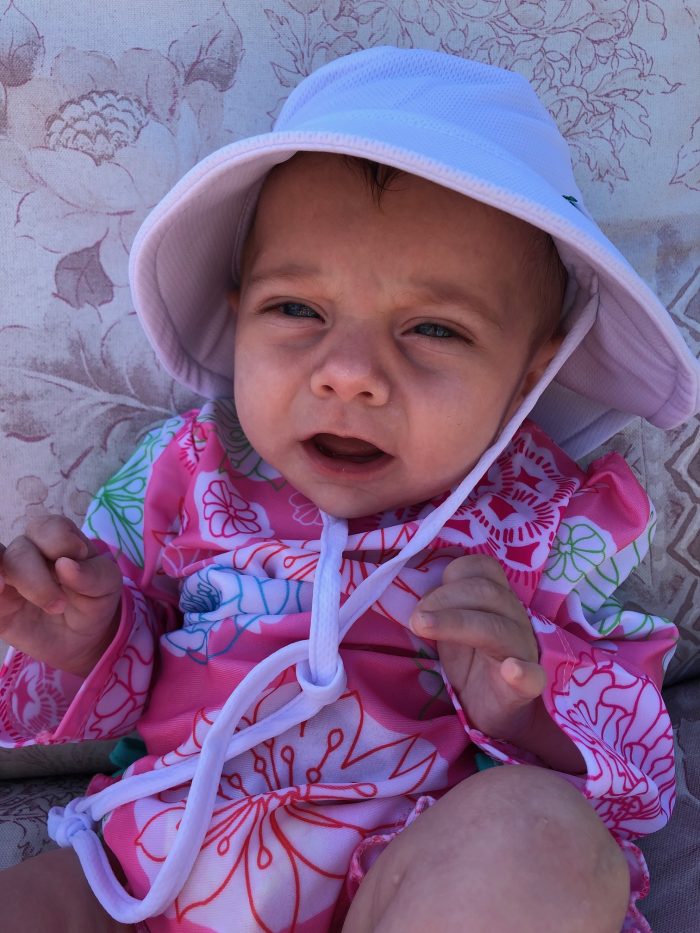
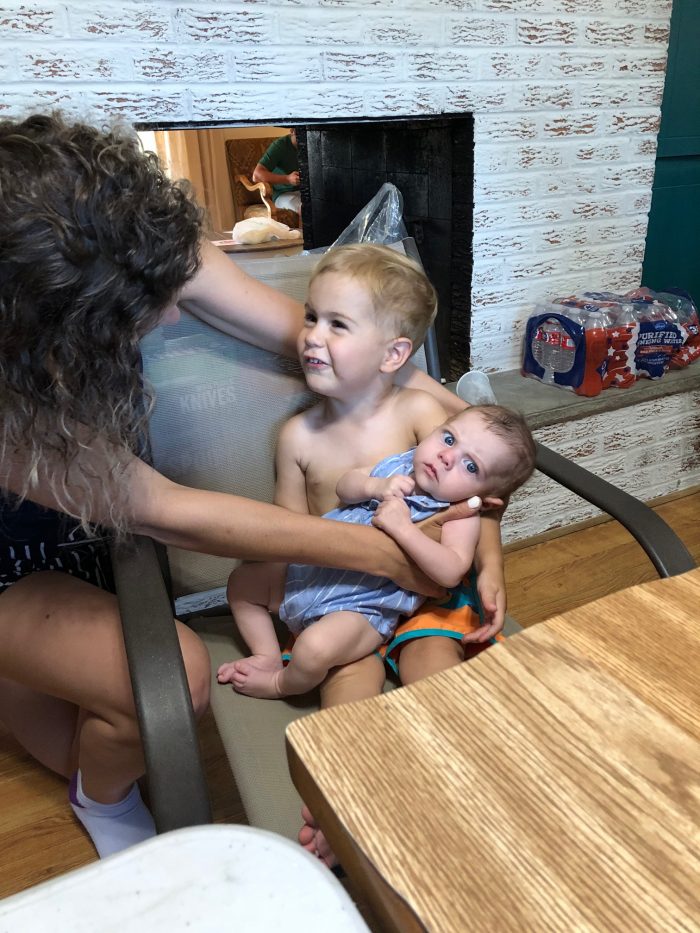
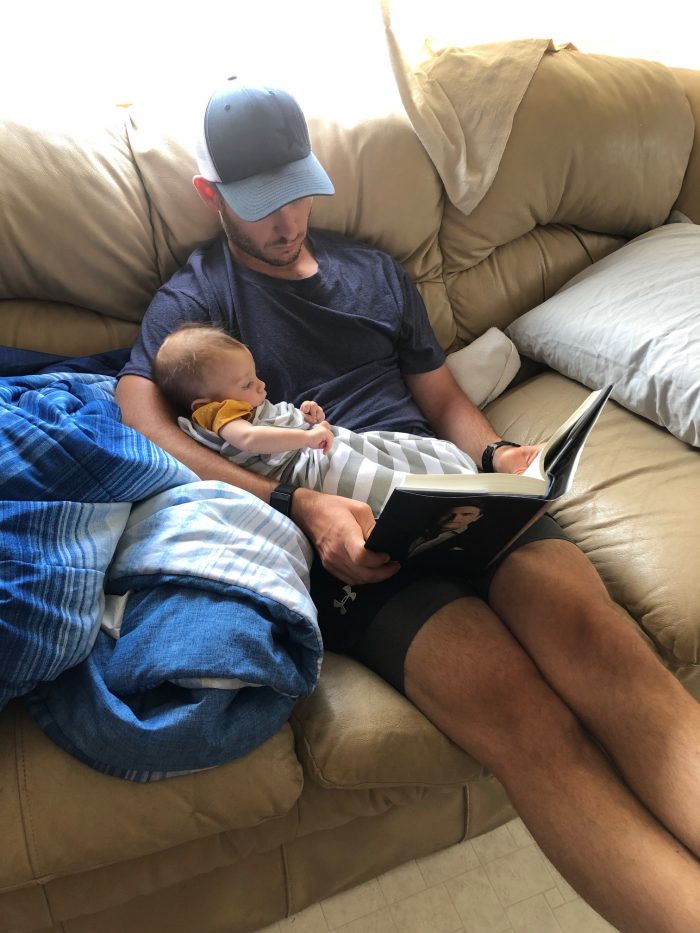
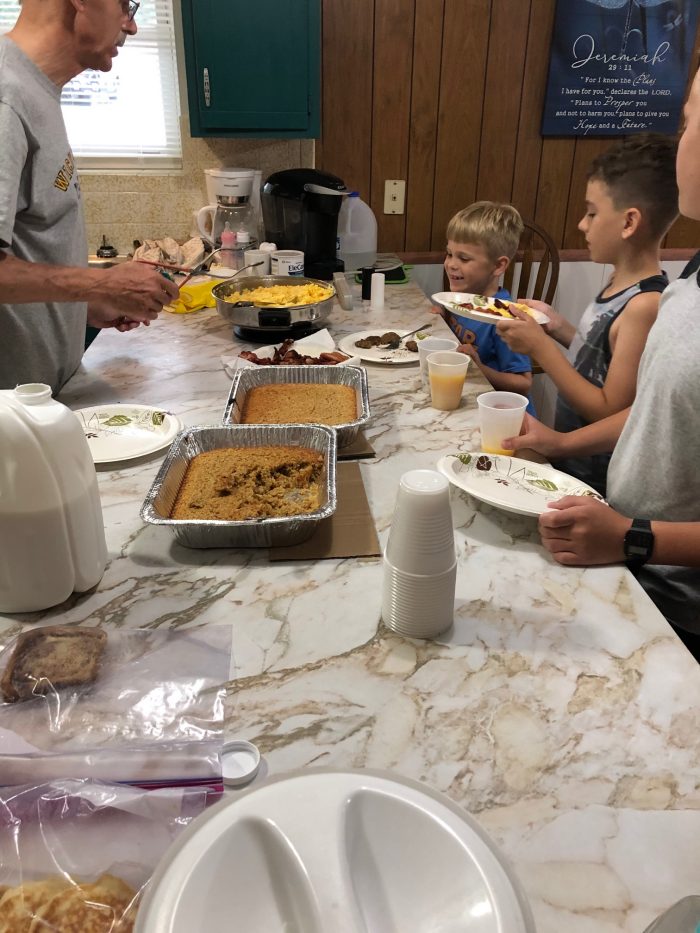


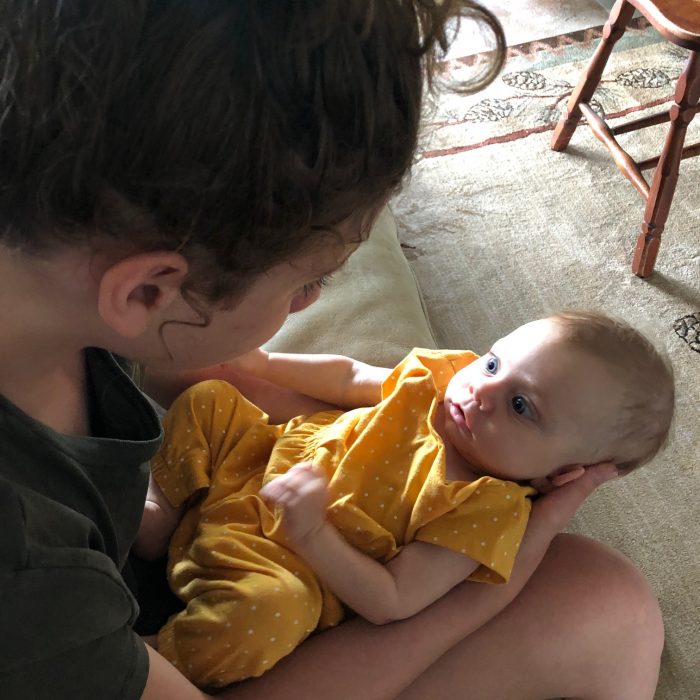
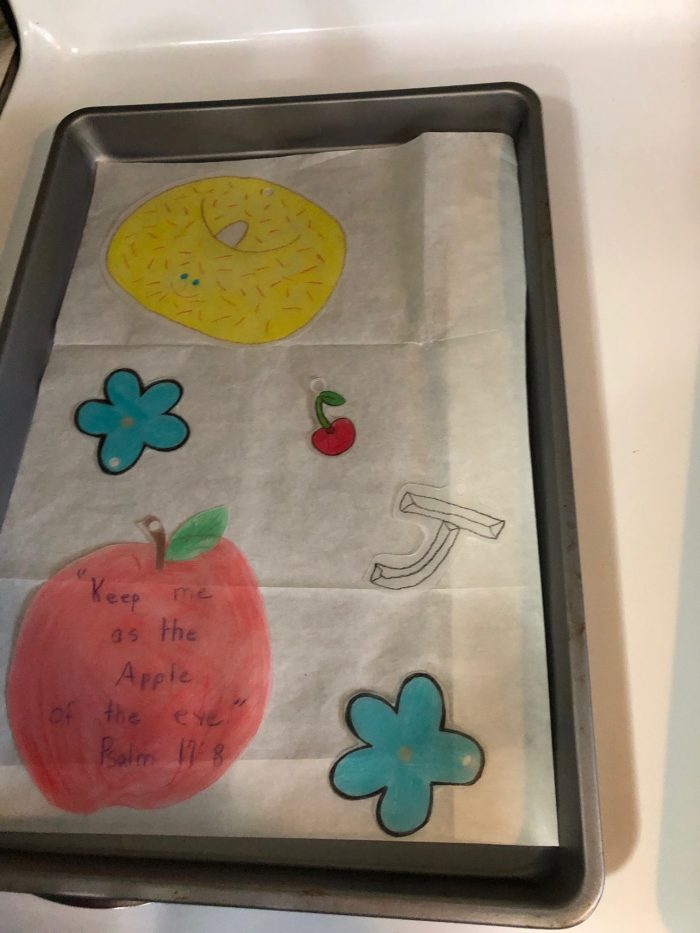


For details on how we all pitch in on meals and clean up, check out this post.
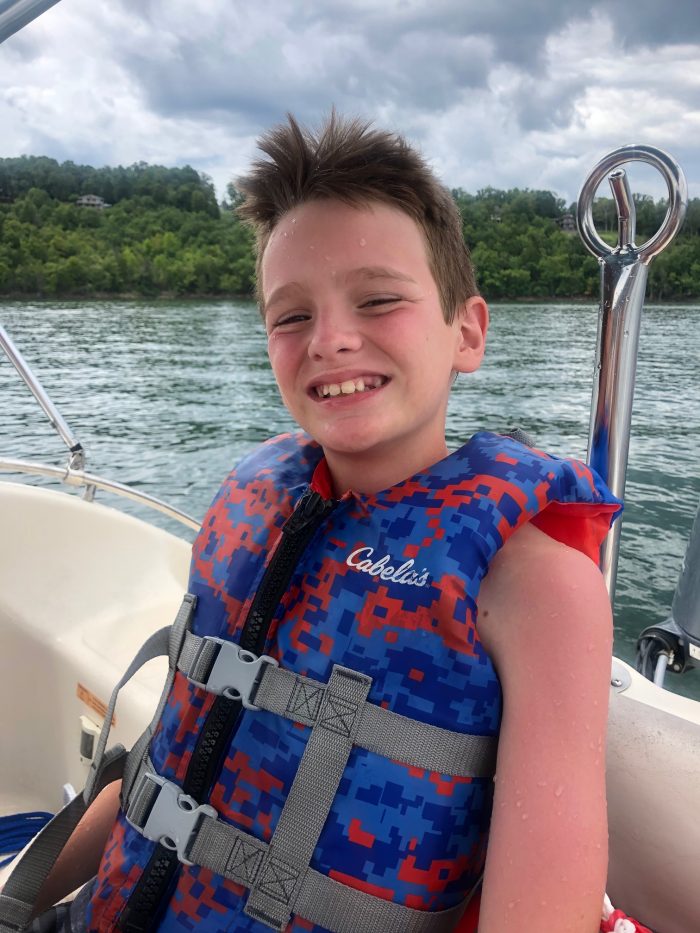



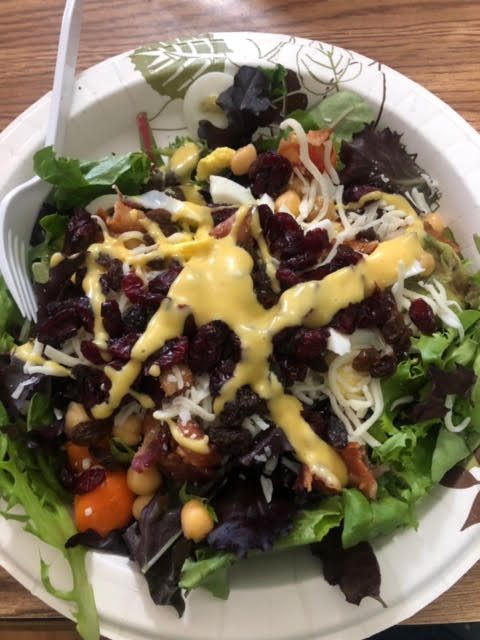
One of my favorite parts of our extended family vacations: the daily salad bars we have.
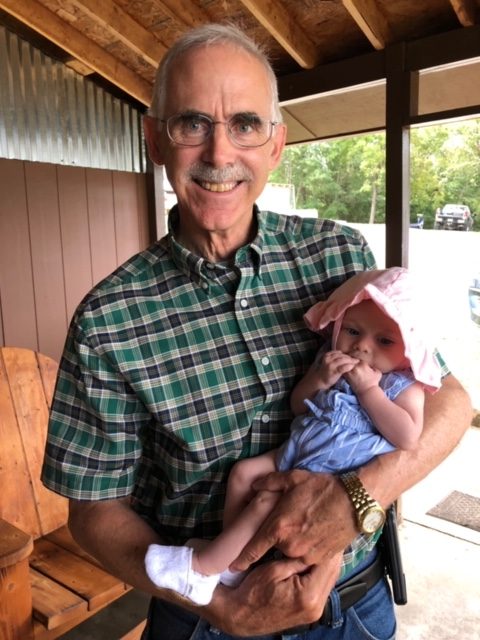

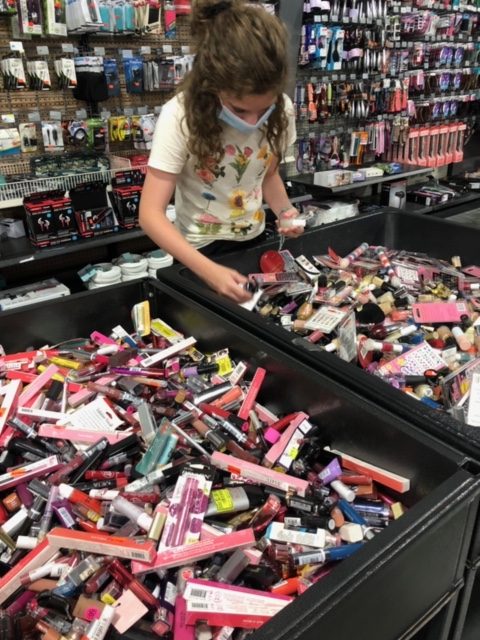
On our way home, we stopped by Ozark, MO so the girls and I could go in to the discount store there. (More details on what we bought coming this weekend!)
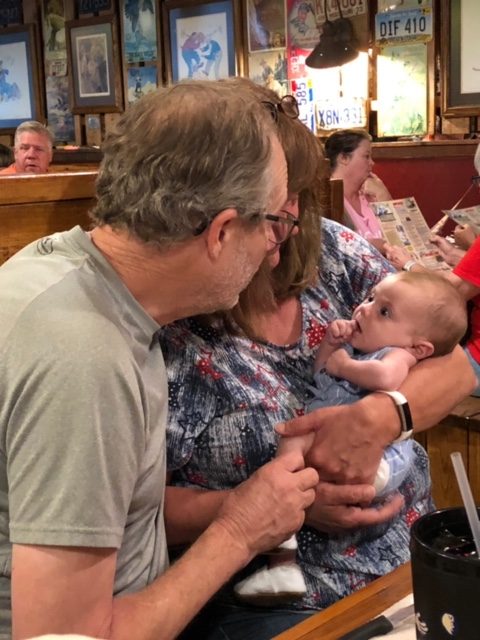
Jesse’s parents and his sister, Lisa, drove from Kansas to meet up with us so they could meet the babies, too.
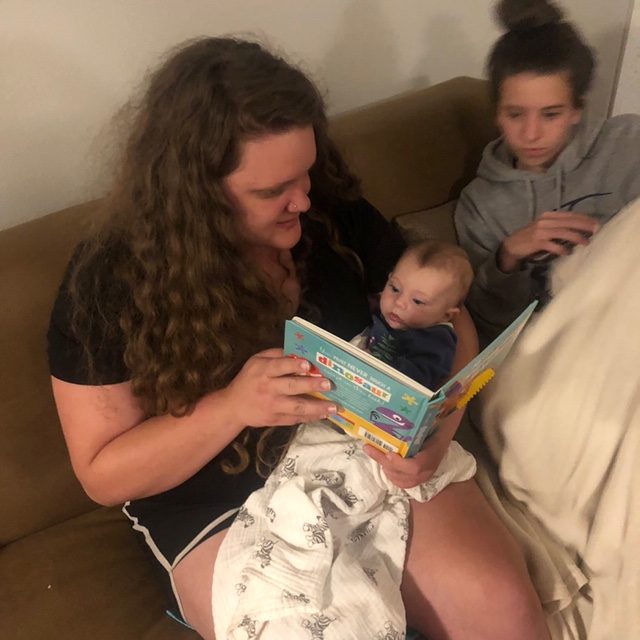
I’m so grateful we got to spend time with extended family. This year certainly has made us so much more grateful for this!

A year ago, we were in the middle of our foster care home study and praying for who God would bring into our home for us to love on.
We were at peace about pursuing this path, but we were still apprehensive and wondering what it might mean for our future. There were so many unknowns, so many what if’s, and so many things outside our control.
I look back on this last year and the 5 children we’ve had the privilege to have in our home — 4 for just a very short-term stint and sweet little Champ who has been with us for almost 4 months.
There are still just as many unknowns, what if’s, and things outside our comfort zone. My heart has been broken in a hundred little pieces over the things we’ve seen and witnessed firsthand and the many kids and their stories whom we weren’t able to say yes to. I’ve cried more tears in the last 10 months than I’ve cried in the last 10 years (okay, pregnancy and postpartum probably played a part in that!).
And yet, my heart is fuller and happier than I can ever remember. The opportunity to love, pour into, and nurture has filled me up in the deepest of places. Seeing my husband and kids sacrifice and serve and love so well has been one of the most amazing experiences.
I don’t know what the future holds. I can imagine it will be full of heartbreak and beauty, tears and love, a roller coaster of emotions, and many things I can’t even imagine.
There are many unknowns, but this one thing I know: I don’t regret for one second saying “yes” to foster care. I look at these pictures and think, “We could have missed this.”
-
 Business2 weeks ago
Business2 weeks agoBernice King, Ava DuVernay reflect on the legacy of John Lewis
-
World News2 weeks ago
Heavy rain threatens flood-weary Japan, Korean Peninsula
-
 Technology2 weeks ago
Technology2 weeks agoEverything New On Netflix This Weekend: July 25, 2020
-
Finance3 months ago
Will Equal Weighted Index Funds Outperform Their Benchmark Indexes?
-
Marketing Strategies7 months ago
Top 20 Workers’ Compensation Law Blogs & Websites To Follow in 2020
-
 World News7 months ago
World News7 months agoThe West Blames the Wuhan Coronavirus on China’s Love of Eating Wild Animals. The Truth Is More Complex
-
Economy9 months ago
Newsletter: Jobs, Consumers and Wages
-
 Finance8 months ago
Finance8 months ago$95 Grocery Budget + Weekly Menu Plan for 8

